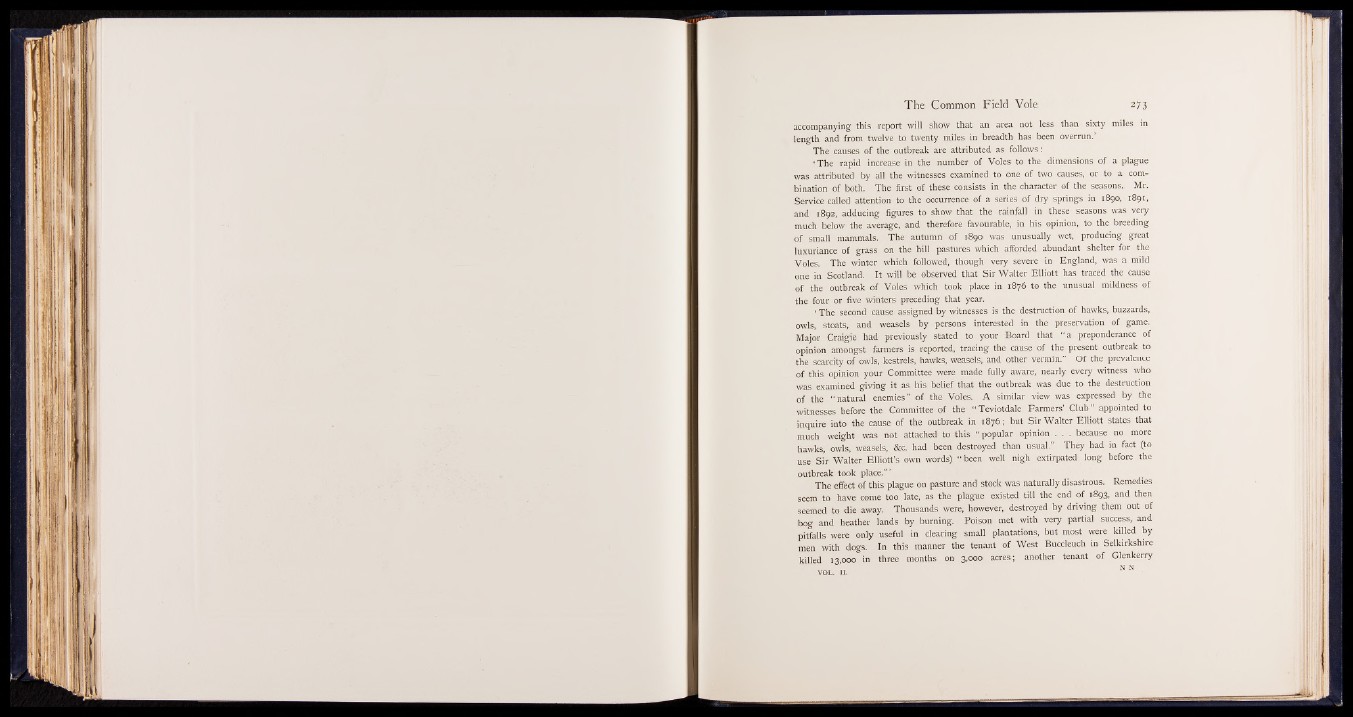
accompanying this report will.bjshow that an area not less than sixty miles in
length and from twelve to twenty miles in breadth has been overrun.’
The causes of the outbreak are attributed as follows:
'The rapid increase in the number of Voles to the dimensions of a plague
was attributed by all the witnesses examined to one of two causes, or to a combination
of both. The first of these consis|s in the character of'the seasons- Mr.
Service called attention to the occurrence of a series of dry springs in 1890, 1891,
and 1892, adducing figures to show that the rainfall in these,' seasons was very
much below the average, and therefore favourable, in his opinion, to the breeding
of small mammals. The antumnjpf 1890 was; unusually wet, producing great
luxuriance of grass-./bn the hill pastures which afforded abundant shelter for the
Voles. The winter which followed, though very severe in England, was a mild
one in Scotland. It will'be observed that Sir Walter Elliott has traced the ||u se
of the outbreak of Voles which took place in 1876 to the unusual mildness of
the fou# i l l five winters preceding that year.
' The second cause assigned by witnesses is the destruction of hawks, buzzards,
owls, stoats, anjlg weasels; , by persons interested in the preservation of game.
Major Craigie had previously stated toy your Board that | | j preponderance of
opinion amongst farmers is reported, tracing the cause of the present outbreak to
the scarcity of owls, kestrels, hawks, weasels, and other vermin.” Of the prevalence
of this opinion your Committee were made hilly aware, nearly dvery witness who
was examined giving it as his belief that the outbreak was djljt to the destruction
of the “ natural enemies” of the Voles. A similar view was expressed by the
witnesses before the Committee of the “ TemMHs Farmers' Club,” appointed to
inquire into the cause of the outbreak in 1876; but Sir Walter Elliott states that
much weight was not attached to thi|ji“, popular opinion . . . because no more
hawks, owls, weasels, &c. had been destroyed than usual.” They had in fact (to
use Sir Walter Elliott’s own words) “ been well nigh extirpated long before the
outbreak took place.” ’
The effect of this plague on pasture and stock-was naturally disastrous. Remedies
seem to have come too late, as the plague existed, till the end||f 1893, and then
seemed to die away. Thousands were, however, destroyed by driving them out of
bog and heather lands by burning. Poison met with very partial success, and
pitfalls were only useful in clearing small plantations, but most were killed by
men with dogs. In this manner the tenant of West Buccleuch in fflkirkshire
killed 13,000 in three months on 3,000 acres; another tenant g | Glenkerry